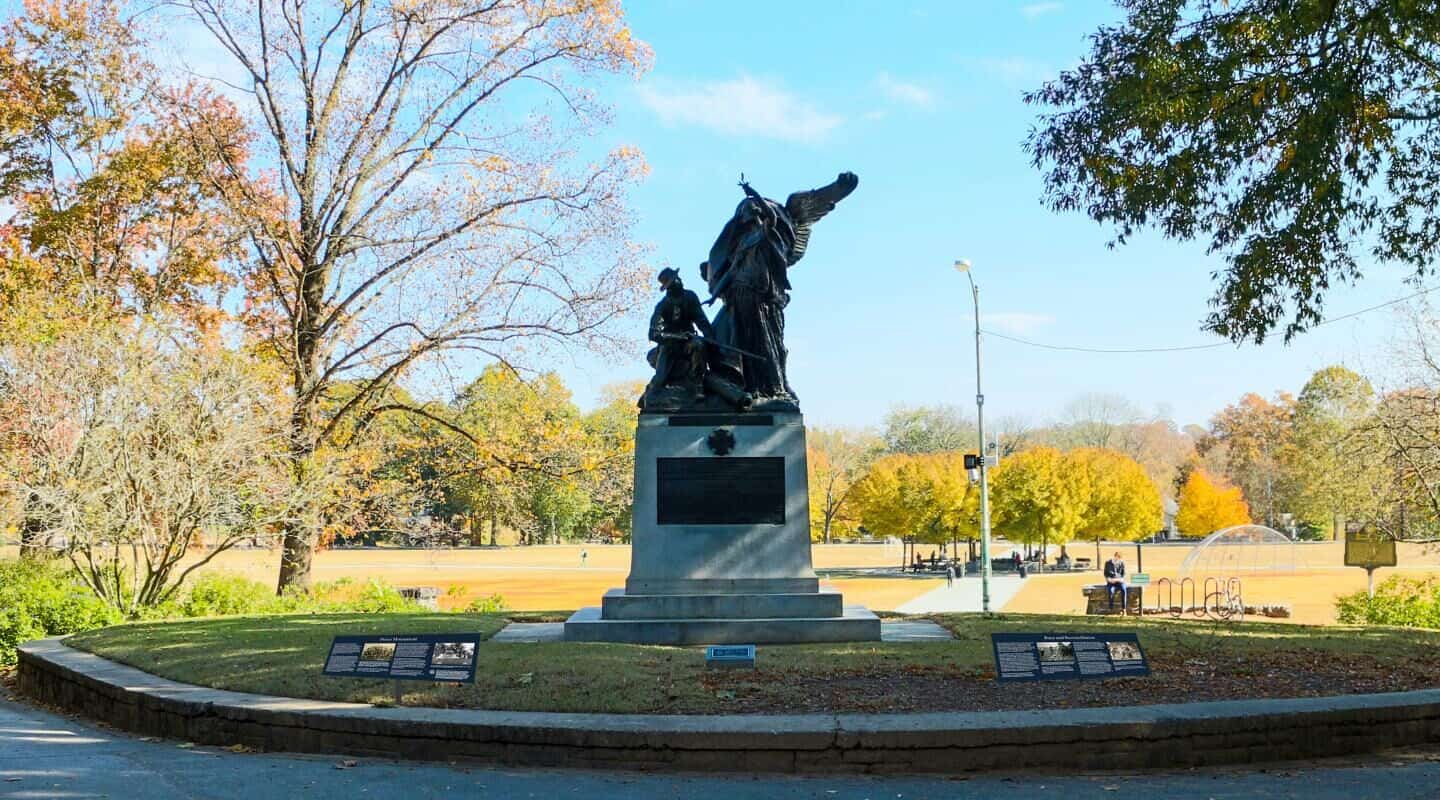In response to contentious discussions happening throughout the country about the role of Confederate monuments and symbolism in 21st century America, Atlanta History Center has created an online toolkit to help put Confederate monuments in historical perspective and foster dialogue about the future of these monuments.

One thing is clear in the view of the History Center: The status quo of leaving monuments without historical context is not an option. Monuments must be contextualized, or they must be removed.
Contextualization involves the creation of an outdoor exhibition surrounding the monument and can take the form of panels, plaques, and/or digital resources such as websites and apps. The goal of contextualization is to explain the historical context surrounding the monument in question, which can include the monument’s dedication ceremony, social and political events and practices during the time period when the monument was erected, and how the monument has been viewed and used by the community over time.
While some early Confederate monuments were erected to honor the dead and reside in locations such as cemeteries, most monuments were erected during the era of Jim Crow segregation. These segregation-era monuments were frequently placed in prominent public locations, such as in front of courthouses, state capitols, and town squares, and often feature figures of triumphant Confederate generals. These monuments are not about loss, many historians concur based on the historic record; rather, they were erected to stand in opposition to racial equality.
Confederate monuments also represent a strain of mythology about the causes and consequences of the Civil War known as the Lost Cause. Lost Cause mythology claims that the Confederacy won a moral victory, even though it lost on the battlefield. Most importantly, this mythology posits that slavery was not the central cause of the Civil War and minimizes the important role that African Americans played in their own liberation. Slavery was the central cause of the Civil War. The reunification of the country and the liberation of 4 million Southerners, or 40 percent of the South’s population at the time, were its most important outcomes.
By using these tools to encourage well-informed, productive conversations, communities can decide on a case-by-case basis the best course of action for the future of Confederate monuments.
Tools on Atlanta History Center’s website include:
- A template to guide local researchers in investigating a monument’s history
- A list of evidence-driven scholarship about the Civil War and historical memory
- Latest news on monuments in the United States and around the world
- A guide for placing monuments in historical context
Contact
Learn. More.
-
Projects & Initiatives
A toolkit designed to help communities address Confederate monuments in their midst.
-
Confederate Monument Interpretation Guide
Confederate Monument Interpretation Guide media coverage.
-